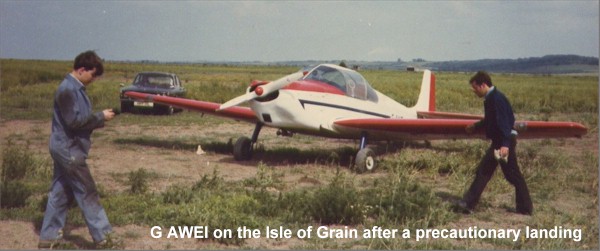The power to weight ratios you have quoted are assuming max engine power is available at take off .That is not the case
I agree!
So the situation is of a different degree to what I have portrayed as far as power to weight ratio, but you get the idea.
Probably only 70% of the power is available on takeoff, and 100% is only available in straight flight at red line at sea level on an ISA day with clean fresh spark plugs!
But the sense is true, it takes a certain amount of power to weight ratio to produce a certain performance.
We have not even considered Reynolds numbers yet!
Smaller wings have different qualities to larger ones.
Most mincabs are NOT a65 powered !
Which is why I put in the C85 version.
the 0-200 develops max hp at 2550rpm
2,750 RPM. It's etched in my memory.
The Evra D11 28 4C propeller (memory again) would give you about 2,350 to 2,400 RPM on takeoff, I'd have to look at the power curve to determine the horsepower... The thrust curve would be different however as the propeller efficiency would change.
You are correct about CSU propellers... I watch the 80hp Rotax Katana out climb the 98hp O-200 Cessna 150 easily in the hot temperatures of Thailand even though the Cessna's prop is a 'climb' prop.
Does the Minicab's MTOW change with the larger engine?
you shouldn't come on here posting advice based on assumptions and giving false information
True, I agree, the use of 98/85/65 horsepower for takeoff is inaccurate.
However, all aircraft perform within their own limitations.
I'm as guilty as anyone of flying overloaded, but I've also learned a lot of lessons about CG and weight and their effects on performance.
We get away with a lot of things...
Hatz wrote: "Matt flies his regularly (he is 6ft 2, 15stone ) with a similar sized passenger and 4/5 hrs fuel."
This advice on the capabilities of the Minicab is based on an overgross situation, I know of very few small aeroplanes that can carry the above load. 4/5 hours of fuel is anywhere from 16 to 30 US gallons depending on the engine fitted so the weigh of fuel alone would be up to 180lbs.
Is it correct to suggest an aeroplane be operated above its MTOW in order to prove why one should buy such an aircraft?
Shouldn't one buy an aircraft that can legally carry a desired payload?
I'm sorry we're having this argument Hatz, we all like our aeroplanes, but this discussion should reflect the reality of each type.
We all have our opinions and that is why there's a forum like this.
One thing is for certain however, and that is you are far more current in the Minicab than I am!
O-200 is much worst than that. It generates 100hp at 2750rpm
Rollasons never got more than 98bhp out of an O-200, that's why I used that figure.
All of the French wooden aeroplanes of late 40's and 1950's were good in their own ways.
Even the Condor was originally built with a smaller engine (in France) but this aeroplane is too big and heavy for anything less than an O-200.
My opinion for what it's worth is that each of these aeroplanes has its own good and bad points and none of them is the perfect all around aeroplane (though the Condor came close

). Not that I'm biased!
Each person should choose an aeroplane based on the merits that most suit that person.
I bought Condors because they were the best aeroplanes for what I had in mind.
The Minicab is a brilliant personal aeroplane but it has its limitations.
Take a little more runway and a Jodel Mascaret will take you to the South of France easily and very efficiently.
The Emeraude is delightful.
So to conclude this.
Check the aircraft thoroughly, ensure you know the empty weight, and determine whether it can carry what you want to carry.
Ensure the performance is what you want.
Short strip, local flying, occasional long cross country, the Minicab may be the best aeroplane for you.
Not so short strip, long distance touring, economy, CG tolerance, go for a Jodel.
I have advised on many aircraft in my lifetime and had happy customers always.
I have no problem recommending the Minicab where appropriate.
I advised someone recently not to buy a Lancair 320... He did anyway and I flew it back for him... The 'Reynolds' numbers for this 'hot ship' mean it has no tolerance for bad technique, it shouldn't be for someone who's done his first solo in a C172 recently.

